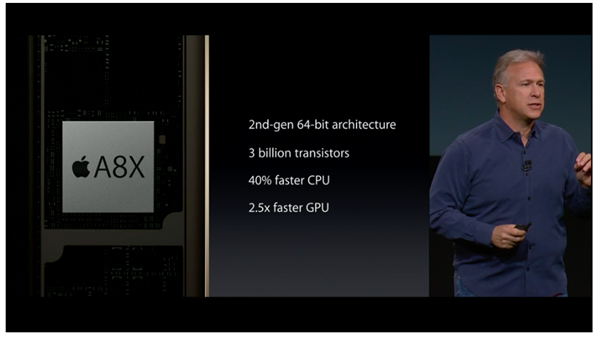Apple A8X chip: is there such thing as being "too good" at what you do? Samsung, Intel, nVidia and Qualcomm are about to find out.
 Business is business, no matter if it’s big or small. Partnerships are a big part of doing business for most companies that come to rely on each other for manufacturing, design and engineering.
Business is business, no matter if it’s big or small. Partnerships are a big part of doing business for most companies that come to rely on each other for manufacturing, design and engineering.
If we want to get technical, there is no such thing as a “smartphone maker”, or a “tablet maker” or a “laptop maker”, at least for now. There is always a conglomerate of companies that buy and sell each other parts, designs, and labor force, for a slice of the pie.
The thing about partnering with Apple is: Apple is all of these things. They are a design company, a hardware manufacturer, and as of late, and in consideration of what is to come of the GT Advanced Technology ongoing saga, a supplier of materials too.
The funny thing is: Apple is the embodiment of anyone who is in the business of succeeding at what they do. When running a business, any kind of business, every deal is never permanent. It’s a stepping stone to something greater. A phone, tablet or laptop need lots of things, a design, hardware, materials, the support of a distribution network.
If Apple asks a company for help with parts, the biggest mistake any manufacturer or supplier can make is to think long term, just like GTAT did, and now... what a mess.
Now it’s the chip manufacturers turn to get nervous, according to this article by AppleInsider.
Samsung, first in line, had one of the longest running relationships with Apple. It was always a love-hate relationship, but Samsung knew that going in. Now, with Apple embracing ARM and creating its own chip for the iPhone and iPad, with plans to potentially extend it to all future mobile Apple products, Samsung needs to plan accordingly, and be proactive.
Intel is also worried about losing massive profits from Apple “flying solo”, but the truth is, Microsoft needs Intel more than Apple ever did, and that was true from the beginning. With Microsoft ongoing restructuring, Intel should only be happier about that change of pace, as long as Windows 10 is going to be as good as we hope, and fuel production of greater devices sporting the “Intel Inside” sticker, as well as what to become of the Android ecosystem in future tablets, phones, laptops and wearables.
nVidia is good at one thing, and that is graphic chips. It has a history of creating high-end products to handle the most demanding graphic tasks. Unfortunately, when nVidia Tegra came out, it turned into a bumpy ride, in a world of smaller devices, fitting the glory of the Quadro and GeForce legacy into tiny handheld electronics, has proven challenging, to the point where nVidia is considering getting out of the phone and tablet market altogether.
Qualcomm has also been a favorite of Apple, building MDM baseband chips for iPads, at least until Apple develops its very own version, which is a very likely scenario.
Like all of the above, being a “go-to” company, for Apple, is indeed a fuzzy and comfortable feeling in terms of prospective profits and the recognition of planting a flag on an Apple device. Yet, it doesn’t last forever, and besides, why should it?